Snowmelt and spring rains are on their way, and in many places, excessive runoff from them is a recurring springtime problem. As a homeowner, you can help by allowing water to infiltrate your property instead of sending it offsite through storm drains.
Infiltration is nature’s way of slowly cleansing, storing and releasing water into the aquifer. That’s why creating a permeable landscape that absorbs stormwater is one of the best things you can do to improve water quality and reduce runoff. Learn how infiltration functions in the landscape and see some ideas for implementing it in your home garden.
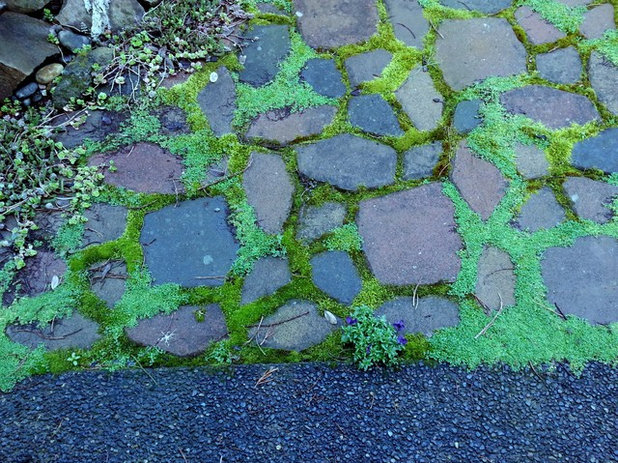
High Tech Turf & Trees
The Infiltration ProcessInfiltration is the process of water entering and being absorbed by soil. Plants and soils have the amazing capability to cleanse and store water, and infiltration is one piece of their collective actions that control stormwater quality and volume.
One of the best things you can do for water quality in your local watershed is allow stormwater to infiltrate your property. It’s also an easy way to manage stormwater runoff because it uses soil’s natural capacity to hold and slow water down. Infiltrating water means less runoff overall, which reduces the load on water bodies downstream. Infiltration also is great for improving water quality because the ground cleanses water as it passes through biologically active soil that is stabilized by plants.
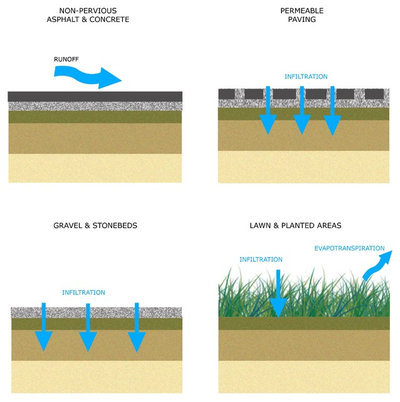
Falon Land Studio LLC
What Prevents InfiltrationBuildings and paving create more water runoff because they displace ground that was previously permeable to rain. These impervious — also called non-pervious — surfaces act like a cap on the ground that won’t allow water to penetrate the soil. Additionally, water flowing off those surfaces and into stormwater drains can be polluted — the rooftop and the driveway are examples of surfaces that will have oils and pollutants on them. By introducing pervious surfaces like permeable paving, gravel beds and planted areas, you can drastically reduce your property’s stormwater runoff and help cleanse water as it is absorbed into the ground.
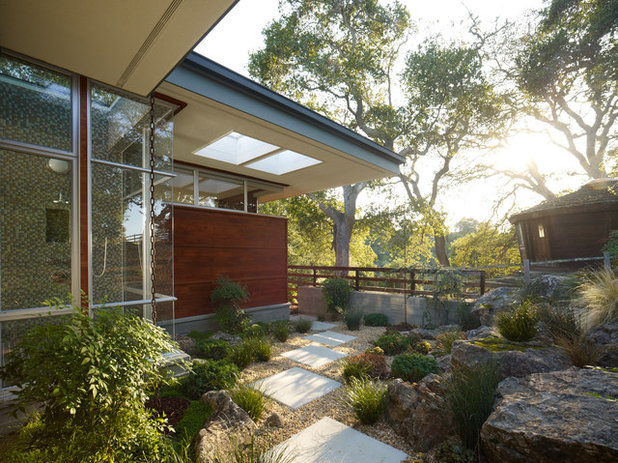
Cody Anderson Wasney Architects, Inc.
Features That Promote InfiltrationPermeable paving. Permeable paving can be anything from modular pavers set on a sand setting bed to porous asphalt to cobbles that are interplanted with mosses. There are many design options for how the materials can meet and be used to create a more resilient landscape. The goal is to maximize infiltration of water into the soil below.
Note: Bare soil is not good for stormwater management because the soil will erode and wash sediment into bodies of water.
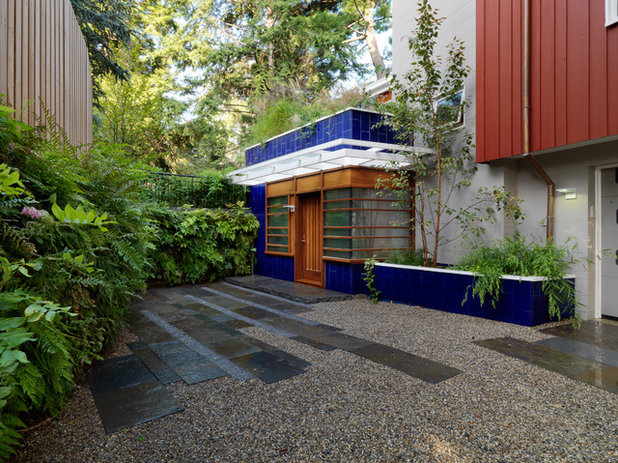
Julie Moir Messervy Design Studio (JMMDS)
Wide bluestone pavers and pea gravel allow water infiltration in this Boston courtyard. This example shows how you can provide a hard surface where necessary while still allowing for water infiltration. Mixing materials is also a great opportunity to introduce varying colors and textures to the ground plane. Set pavers slightly higher than the gravel to keep the gravel in place.
See more ways to mix pavers and gravel
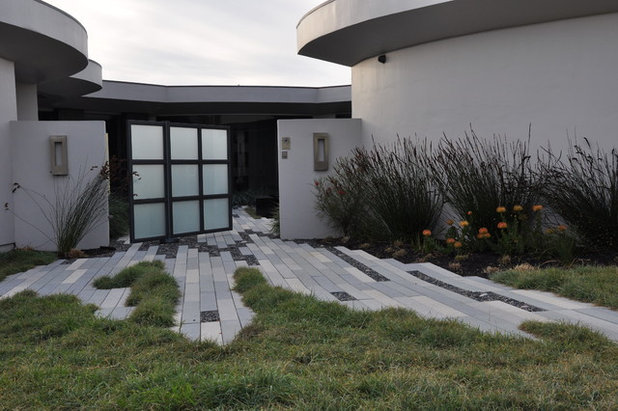
Jeffrey Gordon Smith Landscape Architecture
Here a paving area leads into an adjacent pervious grassy area.
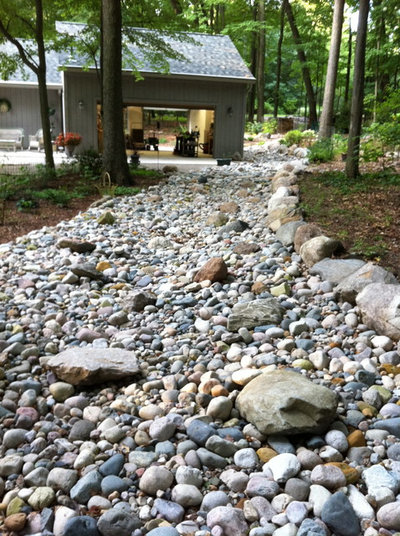
Landforms
Gravel and stonebeds. Gravel and stone beds are called infiltration trenches or stone swales when used for stormwater control. They are designed and graded like swales — linear depressions that receive stormwater — to specifically hold and infiltrate water into the ground. There are other swale types designed to move water.
Gravel and stone infiltration trenches and pits can be integrated into the landscape in numerous ways. Some examples include installing them as gravel trenches, gravel walkways and dry creekbeds. If you choose to work stone into your landscape, be sure to use local materials. Rocks and pebbles from your region will integrate with your landscape’s color, texture and tone.
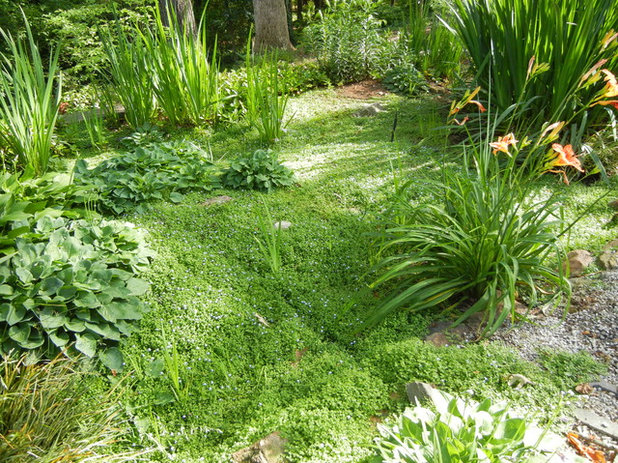
Eco-Art, LLC
Planted areas. Pictured here is a full rain garden with a combination of ground covers and grasses. Rain gardens are depressions in the landscape near runoff sites specifically designed to store water before allowing it to infiltrate into the soil. Rain garden plants sustain periods of drought followed by flooding and help clean out the chemicals and contaminants in stormwater as it infiltrates the soil.
Rain gardens can store and cleanse large amounts of runoff from rooftops and other large surfaces. You can also direct downspouts directly to rain gardens through swales. The Rain Garden Alliance can help you approximate the appropriate rain garden dimensions for your yard, based on your house’s surface area, average rainfall per rain event and other factors.
Read more about rain gardens

LNA - Master Landscapers Association
Lawns can be used for walter infiltration, so long as the water is sufficiently spread over the lawn’s surface. The water flow is not simply dumped from a narrow pipe, but is instead allowed to flow and spread into the lawn through grading.
To effectively cleanse and infiltrate stormwater, your lawn needs to follow an organic maintenance plan. Follow best management practices for the timing and quantity of fertilizer applications. Otherwise, those pesticides and chemicals can get carried into our watershed.
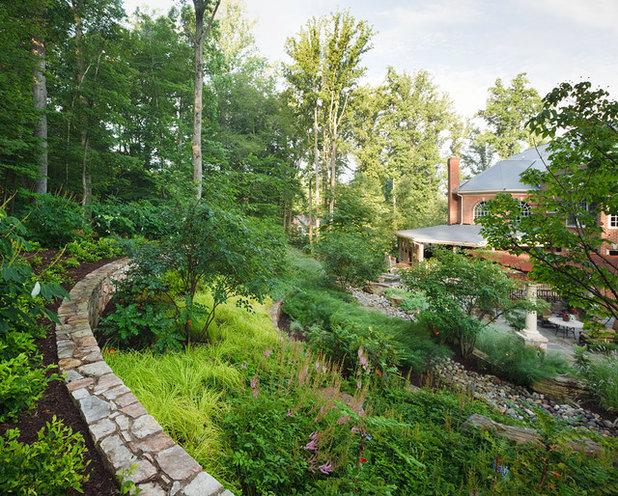
SURROUNDS Landscape Architecture + Construction
Steep slopes are prime areas for slowing down stormwater for infiltration through terracing. Pictured here is a slope that has been terraced with stone-faced walls and planted with grasses, shrubs and perennials.
How to size and site your infiltration methods depends largely on the frequency and intensity of storms in your climate and the infiltration rate of your soil. There are several models that compute storm intensity and runoff rates for specific climates. You can hire a professional to calculate stormwater runoff in your garden or use available online tools.
You can use any of the infiltration methods mentioned in this article as part of a sustainable stormwater management plan for your property.
See more ways to save water in the landscape





